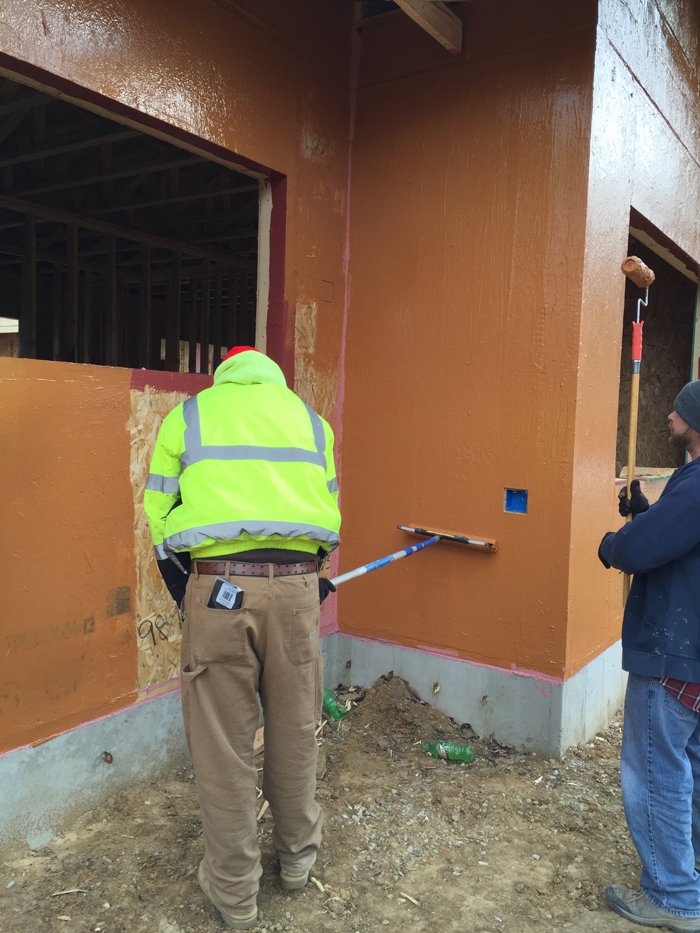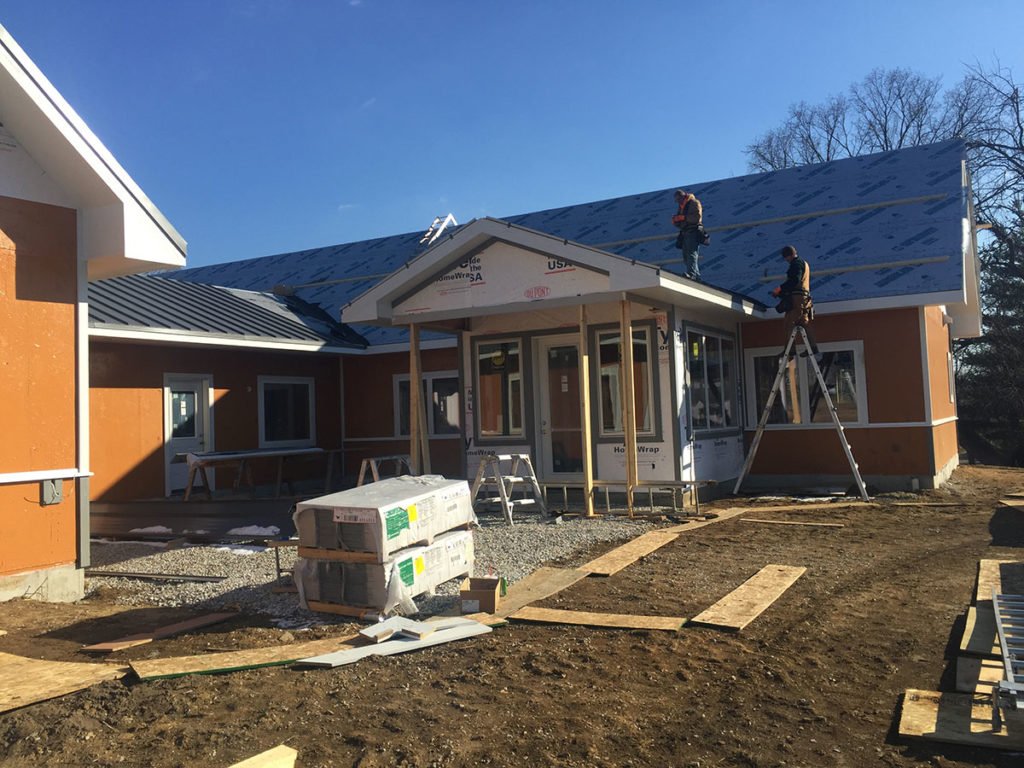Using Liquid House Wrap and Recycled Blown-in Cellulose Insulation
comprehensive green building techniques are critical for maximizing energy efficiency. Today, we’re revealing two new layers of our leed platinum, Phius certified home office.
Exterior Liquid House Wrap
Most residential construction uses overlapping sheets of plastic house wrap. However, The sheeting suffers from gaps and tears and requires hardware in your exterior walls. To seamlessly protect our green building insulation, we used a paint-on liquid house wrap made of rubber.
The rubber house wrap has self-sealing properties, does not tear and is more waterproof and airtight than conventional house wrap. Our green building is so airtight that it became Missouri’s first Passive House Institute US (PHIUS) certified building.
Here’s a photo of the liquid house wrap application—expect questions from your neighbors about the color!
Here’s how it looked after application.
Blown-In Cellulose Insulation
A building’s ceiling is often one of its largest thermal bridges, or areas where heat loss occurs. To maximize energy efficiency, Peckham Architecture doubles the recommended ceiling insulation.
The 18-inch ceiling cavity of our home office contains blown-in cellulose insulation: a recycled paper product treated with borax to protect from infestations.
Learn more in Episode 5 of our Green Building Series:
Ready to begin your own deep green building or renovation?
A 1-hour consultation with Peckham Architecture includes project meeting notes, cost estimate and fee proposal for $250.
Contact us today to get started.

